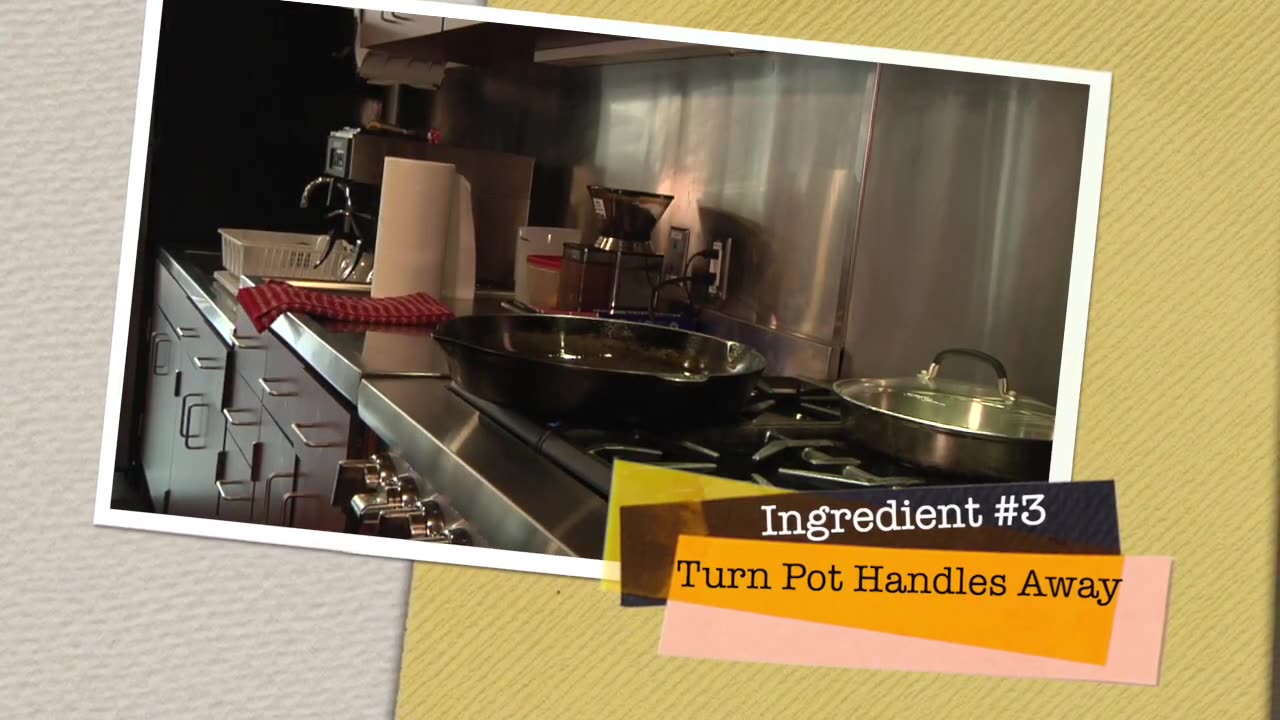Premium Only Content

VCFD Kitchen Fire Safety
### **VCFD Kitchen Fire Safety**
---
Kitchen fires are one of the leading causes of fire-related incidents in homes and foodservice establishments. The Ventura County Fire Department (VCFD) emphasizes proactive safety practices to prevent fires and ensure swift action if one occurs. Here are the key guidelines for maintaining kitchen fire safety:
---
### **Common Causes of Kitchen Fires**
1. **Unattended Cooking:** The primary cause of kitchen fires. Food left on stoves or in ovens can ignite if forgotten.
2. **Grease Fires:** Hot grease can ignite quickly and spread rapidly.
3. **Faulty Equipment:** Malfunctioning or improperly used appliances like microwaves, toasters, or deep fryers.
4. **Clutter Near Heat Sources:** Flammable materials like dish towels, paper towels, or food packaging left near stoves or ovens.
5. **Improper Storage of Flammable Materials:** Cleaning chemicals or cooking oils stored too close to heat sources.
---
### **Prevention Tips**
#### **1. Stay Attentive While Cooking**
- Never leave cooking food unattended.
- If you need to step away, turn off the stove or use a timer to remind you.
#### **2. Control Heat**
- Keep stove burners at safe temperatures.
- Avoid overheating cooking oils; use a thermometer to monitor temperatures when frying.
#### **3. Maintain a Clean Kitchen**
- Regularly clean stovetops, ovens, and vents to remove grease buildup.
- Dispose of oil-soaked towels or rags in a safe, non-flammable container.
#### **4. Keep Flammable Objects Away**
- Maintain a safe distance between heat sources and flammable materials.
- Use heat-resistant pads for hot cookware.
#### **5. Use Appliances Properly**
- Follow manufacturer guidelines for all kitchen appliances.
- Inspect cords and plugs for damage and replace them if necessary.
#### **6. Store Flammable Items Safely**
- Keep cooking oils, alcohol, and cleaning supplies in cool, dry areas away from heat sources.
#### **7. Install Safety Equipment**
- Place smoke detectors and fire extinguishers in or near the kitchen.
- Use a fire suppression system if required for commercial kitchens.
---
### **What to Do in Case of a Fire**
#### **Grease Fires**
- **DO NOT Use Water:** Water can cause grease fires to spread.
- Turn off the heat source immediately.
- Smother the fire with a metal lid or baking soda.
- Use a **Class B or Class K fire extinguisher** if available.
#### **Oven or Microwave Fires**
- Turn off the appliance and keep the door closed to starve the fire of oxygen.
- Do not open the door until the fire is completely out.
- Call 911 if the fire continues to grow.
#### **Small Stovetop Fires**
- Use a lid or a fire blanket to cover and extinguish the flames.
- Avoid moving the pan, as spilled grease could spread the fire.
---
### **Fire Safety Equipment**
- **Fire Extinguishers:** Keep a multi-purpose extinguisher (Class ABC) in the kitchen and know how to use it.
- **Smoke Alarms:** Test monthly and replace batteries at least once a year.
- **Fire Suppression Systems:** Required for commercial kitchens, these systems automatically extinguish fires over cooking equipment.
---
### **Emergency Preparedness**
- Have an evacuation plan and ensure all occupants know it.
- Ensure exits are clear and accessible.
- Call 911 immediately if a fire cannot be contained safely.
---
### **After a Fire**
- Do not re-enter the kitchen until cleared by firefighters.
- Have appliances and the electrical system inspected before reuse.
- Clean and repair affected areas to prevent future incidents.
---
By following these guidelines, you can create a safer cooking environment and minimize the risk of kitchen fires. For more tips, check with your local fire department or VCFD resources. Let me know if you'd like detailed instructions on fire extinguisher use or safety drills!
-
 7:58
7:58
HSESafetyInformation
9 days agoAuthentic Peshawari Rosh _ Namkeen Gosht Recipe __ Traditional KPK and Baluchistan
461 -
 1:10:55
1:10:55
Donald Trump Jr.
15 hours agoBREAKING NEWS: My Father Revokes Biden-Maduro Oil License, LIVE with Maria Corina Machado | Triggered Ep.220
227K206 -
 1:25:29
1:25:29
Sarah Westall
13 hours agoX-Files True History, Project Blue Beam, Cabal Faction War w/ Former FBI Agent John DeSouza
99.8K40 -
 7:03:49
7:03:49
Dr Disrespect
20 hours ago🔴LIVE - DR DISRESPECT - NEW PC VS. DELTA FORCE - MAX SETTINGS
185K29 -
 49:04
49:04
Lights, Camera, Barstool
1 day agoIs The Monkey The Worst Movie Of The Year?? + Amazon Gets Bond
85.7K5 -
 24:19
24:19
Adam Carolla
1 day agoDiddy’s Legal Drama Escalates, Smuggler Caught Hiding WHAT? + Philly Eagles & The White House #news
173K22 -
 10:12
10:12
Mike Rowe
2 days agoClint Hill: What A Man. What A Life. | The Way I Heard It with Mike Rowe
149K17 -
 1:31:52
1:31:52
Redacted News
16 hours agoBOMBSHELL! This is war! FBI whistleblowers reveal Epstein files being destroyed? | Redacted News
215K401 -
 48:55
48:55
Candace Show Podcast
16 hours agoSTOP EVERYTHING. They FINALLY Mentioned ME In The Blake Lively Lawsuit! | Candace Ep 152
184K143 -
 1:02:51
1:02:51
In The Litter Box w/ Jewels & Catturd
1 day agoWhere are the Epstein Files? | In the Litter Box w/ Jewels & Catturd – Ep. 750 – 2/26/2025
125K91